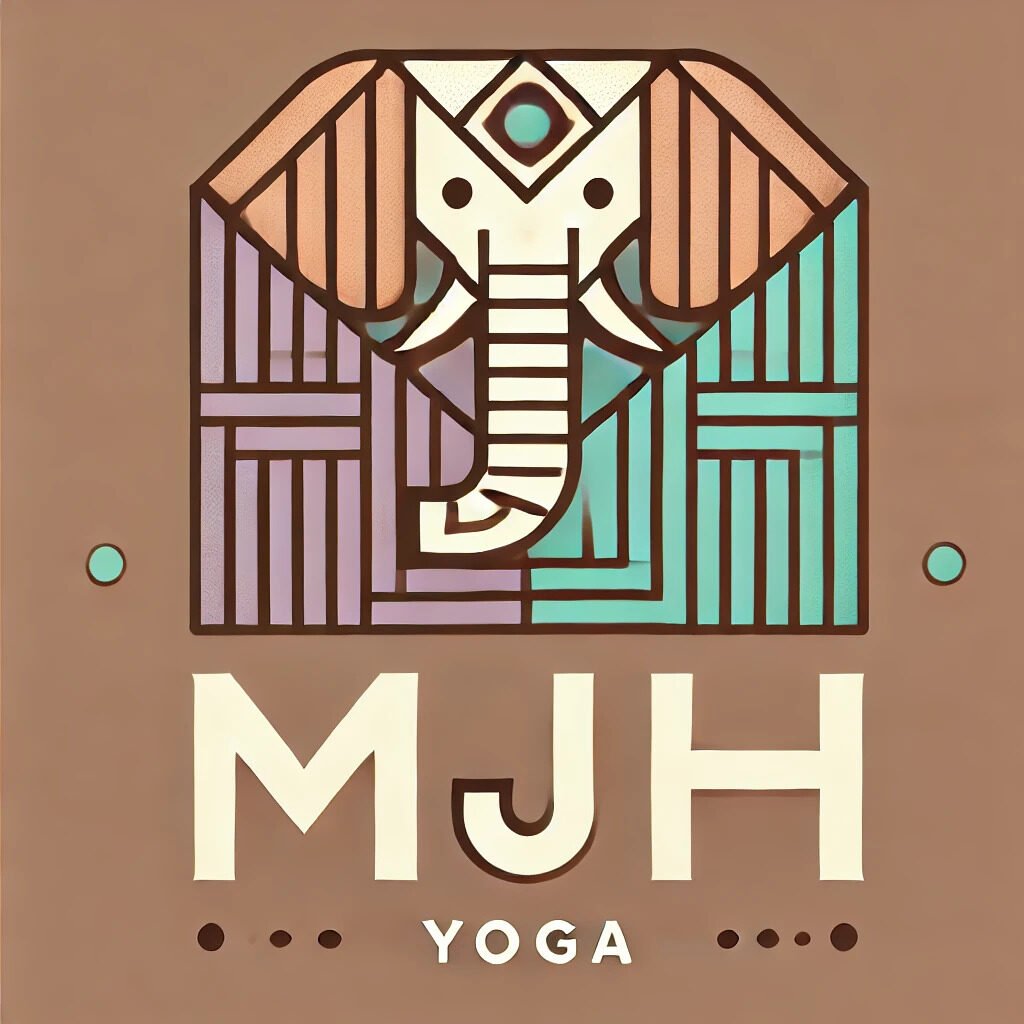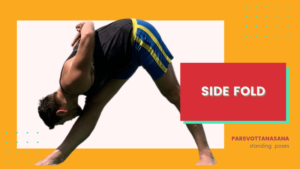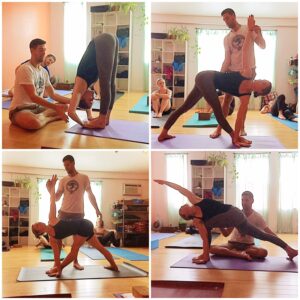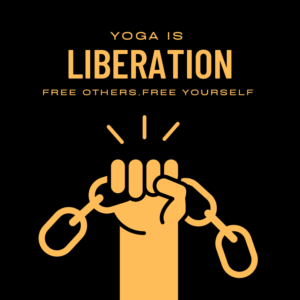Embracing the Tristhana Method: A Beginner’s Guide to the Heart of Ashtanga Yoga
Introduction
The Tristana method is a fundamental concept in Ashtanga Yoga, emphasizing three core elements: posture (asana), breathing system (ujjayi pranayama), and looking place (drishti). These three aspects are deeply interconnected and form the foundation for a transformative and meditative Ashtanga Yoga practice. Here’s a breakdown of each component:
- Asana (Posture):
- Asanas are the physical postures practiced in yoga. In Ashtanga Yoga, there is a specific sequence of postures, each linked with breath and movement.
- The practice of asanas strengthens and purifies the body. It’s not just about flexibility or strength, but also about discipline, concentration, and self-awareness.
- The physical practice is designed to purify the body, making it a healthy, strong, and controlled vessel for the breath and the mind.
- Ujjayi Pranayama (Breathing System):
- Ujjayi Pranayama is a specific type of yogic breathing that is performed by constricting the back of the throat slightly to create a sound similar to gentle ocean waves.
- This breathing technique helps to regulate and focus the mind during practice. It also generates internal heat, which aids in the purification process of the body.
- The synchronization of breath with movement in asanas is key to the Ashtanga practice. Each movement is typically accompanied by an inhale or an exhale, creating a flow of energy through the body.
- Drishti (Looking Place):
- Drishti refers to the gaze or focal point during the yoga practice. Each asana in Ashtanga Yoga is associated with a specific drishti.
- The purpose of drishti is to develop concentration and inward focus. It helps to steady the mind and bring a sense of inner calm and balance.
- There are nine drishtis in Ashtanga Yoga, including the nose, between the eyebrows, navel, thumb, hands, feet, up, right side, and left side.
The integration of these three elements – asana, ujjayi pranayama, and drishti – is what makes the Tristana method unique and effective. When practiced together, they create a powerful tool for focusing and calming the mind while simultaneously purifying and strengthening the body. This holistic approach encourages a deeper connection between the body, breath, and mind, leading to a more meditative and mindful state during the practice.
Understanding Pratyahara and Absorption
- Pratyahara: Often translated as “withdrawal of the senses,” pratyahara is the fifth limb of Patanjali’s eight limbs of yoga. It involves redirecting attention away from external stimuli and focusing inward. This stage is crucial for preparing the mind for deeper meditation and concentration.
- Absorption: Absorption in the context of yoga can be linked to dharana (concentration) and dhyana (meditation), the sixth and seventh limbs of yoga. It implies a deep state of focused attention or immersion in the object of meditation, leading to a heightened state of awareness or mindfulness.
How the Tristana Method Facilitates Pratyahara and Absorption
- Asana and Pratyahara:
- During the practice of asanas, the physical postures help in focusing inward. As practitioners concentrate on alignment and the sensations within their bodies, they naturally withdraw from external distractions.
- This inward focus is the beginning of pratyahara, as it shifts awareness from the external environment to the internal state of the body.
- Ujjayi Pranayama and Pratyahara:
- The practice of ujjayi breathing creates a rhythmic sound that aids in internalizing the senses. This sound becomes a focal point that draws attention away from external noises and distractions.
- The conscious regulation of breath helps to calm the mind, facilitating a state of internal awareness and sensory withdrawal.
- Drishti and Pratyahara:
- Drishti, or focused gaze, further assists in withdrawing the sense of sight from external objects, redirecting it to a single point.
- This focused gaze helps in avoiding visual distractions, allowing for greater internal concentration.
- Integration for Absorption:
- When asana, ujjayi pranayama, and drishti are practiced together, they create a harmonious and meditative flow. This integrated practice helps in maintaining a continuous focus, essential for dharana (concentration).
- The continuous flow of concentration through the practice can lead to dhyana (meditation), where the mind becomes absorbed in the present moment. This absorption is characterized by a deep, uninterrupted focus and a sense of unity with the object of meditation (which can be the breath, movement, or body sensations in the context of Ashtanga Yoga).
Conclusion
The Tristana method effectively fosters pratyahara by drawing the senses inward and preparing the mind for deeper stages of yoga. Through the integration of asana, ujjayi pranayama, and drishti, it creates an environment conducive to absorption, where the practitioner can experience deep concentration and meditative states. This method is a powerful tool in the journey towards a more profound and introspective yoga practice, leading to greater self-awareness and inner peace.
To dive deeper into the Tristana Method and its applications in Ashtanga Yoga, be sure to check out this insightful resource.








